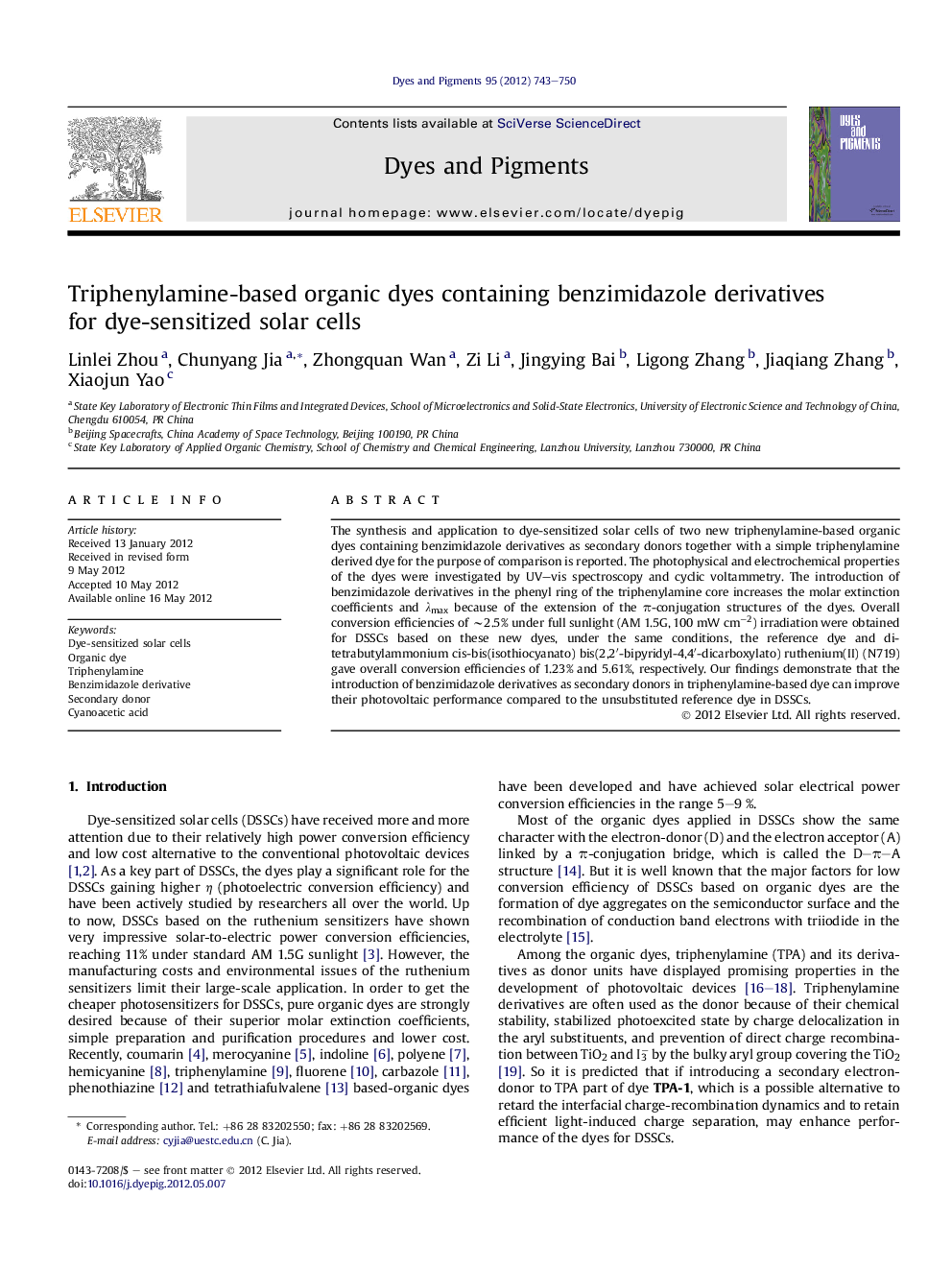| Article ID | Journal | Published Year | Pages | File Type |
|---|---|---|---|---|
| 176858 | Dyes and Pigments | 2012 | 8 Pages |
The synthesis and application to dye-sensitized solar cells of two new triphenylamine-based organic dyes containing benzimidazole derivatives as secondary donors together with a simple triphenylamine derived dye for the purpose of comparison is reported. The photophysical and electrochemical properties of the dyes were investigated by UV–vis spectroscopy and cyclic voltammetry. The introduction of benzimidazole derivatives in the phenyl ring of the triphenylamine core increases the molar extinction coefficients and λmax because of the extension of the π-conjugation structures of the dyes. Overall conversion efficiencies of ∼2.5% under full sunlight (AM 1.5G, 100 mW cm−2) irradiation were obtained for DSSCs based on these new dyes, under the same conditions, the reference dye and di-tetrabutylammonium cis-bis(isothiocyanato) bis(2,2′-bipyridyl-4,4′-dicarboxylato) ruthenium(II) (N719) gave overall conversion efficiencies of 1.23% and 5.61%, respectively. Our findings demonstrate that the introduction of benzimidazole derivatives as secondary donors in triphenylamine-based dye can improve their photovoltaic performance compared to the unsubstituted reference dye in DSSCs.
Graphical abstractFigure optionsDownload full-size imageDownload as PowerPoint slideHighlights► Two new triphenylamine-based organic dyes containing benzimidazole derivatives have been synthesized. ► The introduction of benzimidazole derivatives increases the molar extinction coefficients and λmax of the new dyes. ► The overall conversion efficiencies of 2.43% and 2.65% were obtained based on the new dyes. ► Introduction of benzimidazole derivatives into triphenylamine-based dyes improves their photovoltaic performances.
